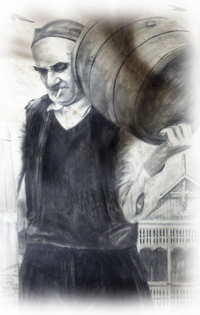The history of rakija
The history of rakija is very young and it does not coincide with discovery of distillation, or the first alcoholic beverages. In fact, the distillation apparatus's were once used for the distillation of aromatic herbs and resins, to create a perfume, fragrances and oils for embalming the Pharaohs.
Drinking of the first alcoholic beverages started in Asia (China and India VII and VIII century),and it was produced by the Mongolian nomads. Mare's milk was subjected to fermentation and the product of that was wine "kumis" and its later distillation lead to a milk brandy "karakumis".
In the Middle Ages in France and Italy, alchemists and apothecaries, through distillation of fermented grape, invented grape brandy and it was considered as a cure, remedy which will give back the youth to the old people.
Recent research suggests that the ancient Slavs in the early fifth century enjoyed mead (so they overtook the Mongols) and with that habit in the seventh century they have settled Balkan peninsula. But mead is still not a spirit, but it is a wine made from honey, and when the regions of Europe actually began mass production of brandy is still not known.
What is certain is that in our region people were drinking brandy in time of Emperor Dusan (the proof of that is paragraph 166. of his Code of 1354.). The written records also indicate that the production of brandy has been continued during the Ottoman rule from 1389. till 1878. year, because the Turks were collecting taxes from 12 aspers per cauldron .
Since the end of the sixteenth century the production and consumption of spirits has risen significantly, both here in Balkan and Europe. Taverns have been opened, fruit-growing is developing, and the production is modernizing. The first apparatus for distilling were made of baked clay, wood, metal or the combination of those things, and only after World War II copper has been exclusively used for making cauldrons. Such cauldrons still have a dominant role in the production, but they are formed in manufacturing facilities with modern, complex devices for half-continuous and continuous production processes, which the craft type of brandy production grew into industrial.


